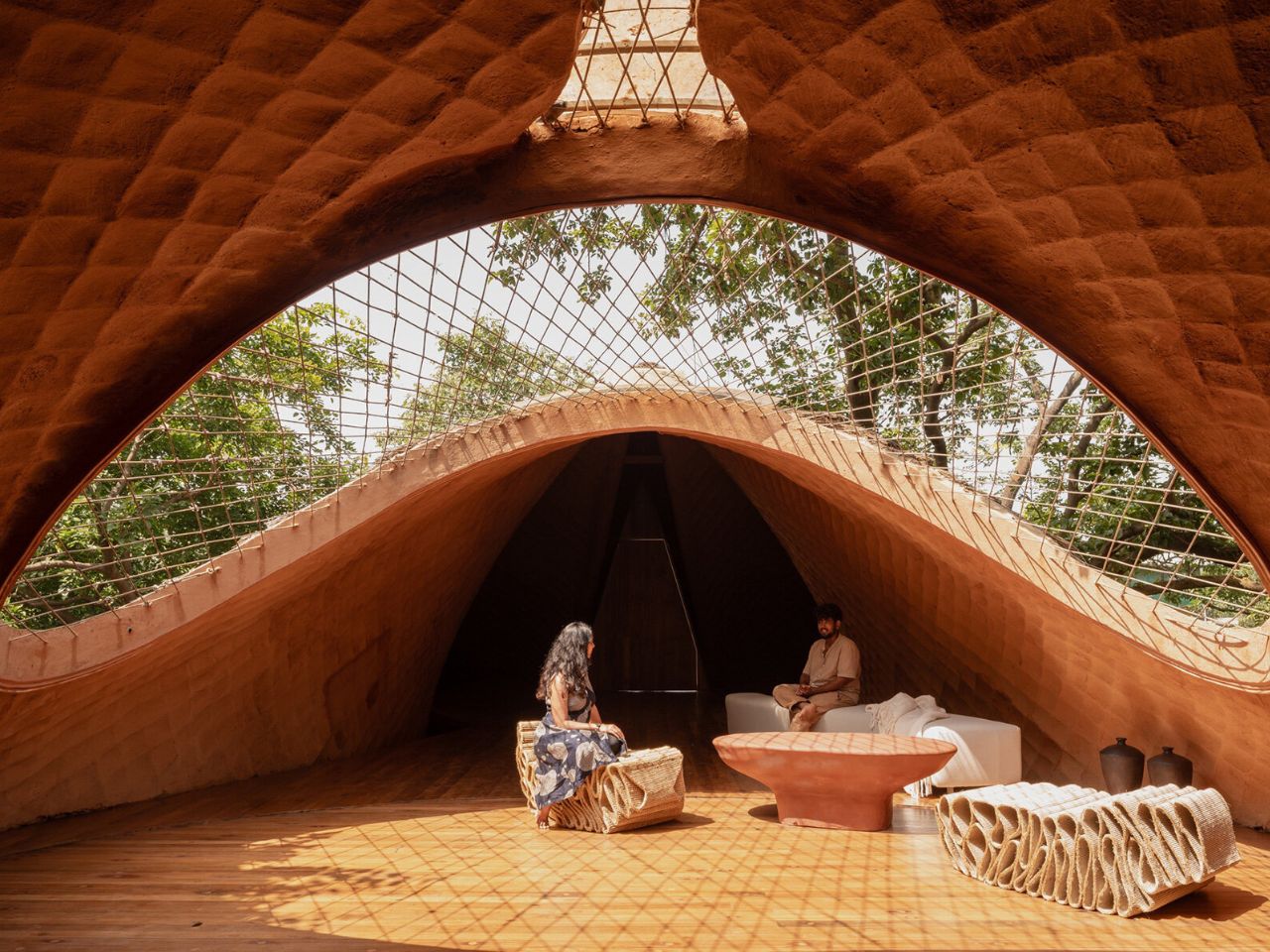Amid the dense, monsoon-fed vegetation of Karjat, India, The Bridge House by Wallmakers, under the direction of architect Vinu Daniel, appears as if it were woven into the landscape itself. A natural stream has carved a seven-meter-deep gorge through the terrain, splitting the land into two disconnected parcels. What could have been a limitation became the defining opportunity to create a dwelling that does not conquer the landscape but hovers above it, merging architecture with the act of crossing.
Rather than filling the void, Wallmakers chose to span it, crafting an occupiable bridge that physically and symbolically unites the site. Since no foundations could be placed within the 100-foot spillway, the design evolved into a suspended home anchored delicately by only four footings on either side of the gorge. The result is a structure that appears to levitate, a line of lightness drawn between two fragments of land.
Designer: Wallmakers
Necessity became invention. The form of The Bridge House emerged from the challenge of building across a natural divide without disturbing it. Conceived as a 100-foot-long suspension bridge, the home is composed of four hyperbolic parabolas, mathematical forms that achieve strength through geometric efficiency. Steel tendons and pipes provide tensile stability, while a thatch-and-mud composite forms the compressive shell.
This combination, simultaneously ancient and modern, generates a dialogue between tension and compression, precision and softness. The house becomes both structure and skin, taut like a bowstring yet flexible enough to adapt to the living landscape.
True to Wallmakers’ ethos of contextual minimalism, the house sits lightly upon its site. The thatched surface, arranged in overlapping scales reminiscent of a pangolin’s skin, blends seamlessly with the forest canopy. Beyond aesthetics, this cladding provides thermal insulation, maintaining cool interiors amid Karjat’s humid climate.
The decision to use only four anchoring points ensures that the gorge and its contours remain untouched. The house becomes a visitor, not an intruder, in the ecosystem it occupies.
Every material used in The Bridge House carries intention. The mud plaster coating that envelops the thatch serves as both armor and adhesive: it prevents pests from entering, enhances compressive strength, and eliminates the need for vertical pillars. In doing so, it underscores the project’s central belief that material intelligence can achieve structural innovation without technological excess.
Inside, the design continues its conversation with nature. At the core of the house lies an oculus, an open circle framing the sky. During rainfall, water filters through this void into a central courtyard, transforming the climate into a sensory event. The interplay of light, water, and air activates the interior, making the house respond to every passing hour.
The interiors are minimal yet warm, defined by reclaimed ship-deck wood, jute, and woven mesh screens that modulate light and airflow. Four bedrooms open outward, some toward the treetops, others overlooking the stream, creating a rhythmic dialogue between enclosure and exposure. The transitions are seamless: the line between “inside” and “outside” dissolves into filtered light and moving shadows.
In The Bridge House, Wallmakers once again demonstrate their mastery of building with the land, not on it. The project stands as an exploration of local materials, structural logic, and ecological sensitivity, a philosophy that defines Vinu Daniel’s work across India.
Suspended above the gorge yet rooted in its context, The Bridge House does more than connect two parcels of land. It connects technology with tactility, structure with story, and human presence with the pulse of nature. In doing so, it reimagines architecture not as a static object, but as a living, breathing bridge between worlds.
The post This Bridge-Shaped House Hangs Weightlessly Between Two Forested Hillsides first appeared on Yanko Design.

